Greetings and welcome to my blog, where I have shared my experience on “how to grow spinach in pots.” As an enthusiastic urban gardener, I know the difficulties of restricted areas and soil fertility.
Therefore, I have resorted to container gardening as a viable alternative, and I must admit, it has significantly transformed my situation. This article will explore the advantages of cultivating spinach in containers and provide detailed material on effectively growing and maintaining this leafy vegetable in pots.
Grow Spinach In Pots
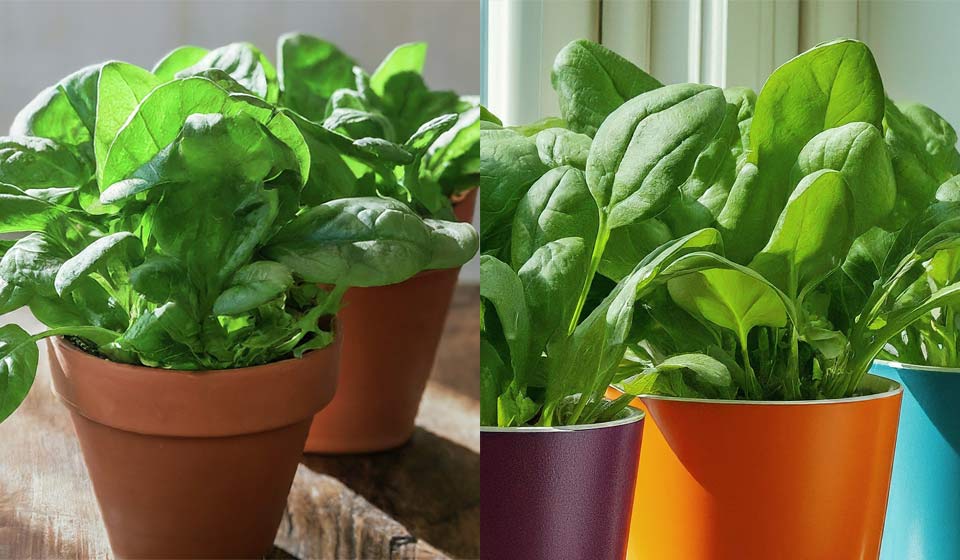
Whether you are a beginner or a seasoned horticulturist seeking to explore new endeavors, this site caters to your needs. Let us go on a journey to explore the pleasures of growing spinach in pots together. Let’s have a look at the benefits of growing spinach in pots.
Also Read: Fast-Growing Intercrops Vegetables: A Complete Guide
A). Benefits of Growing Spinach in Pots
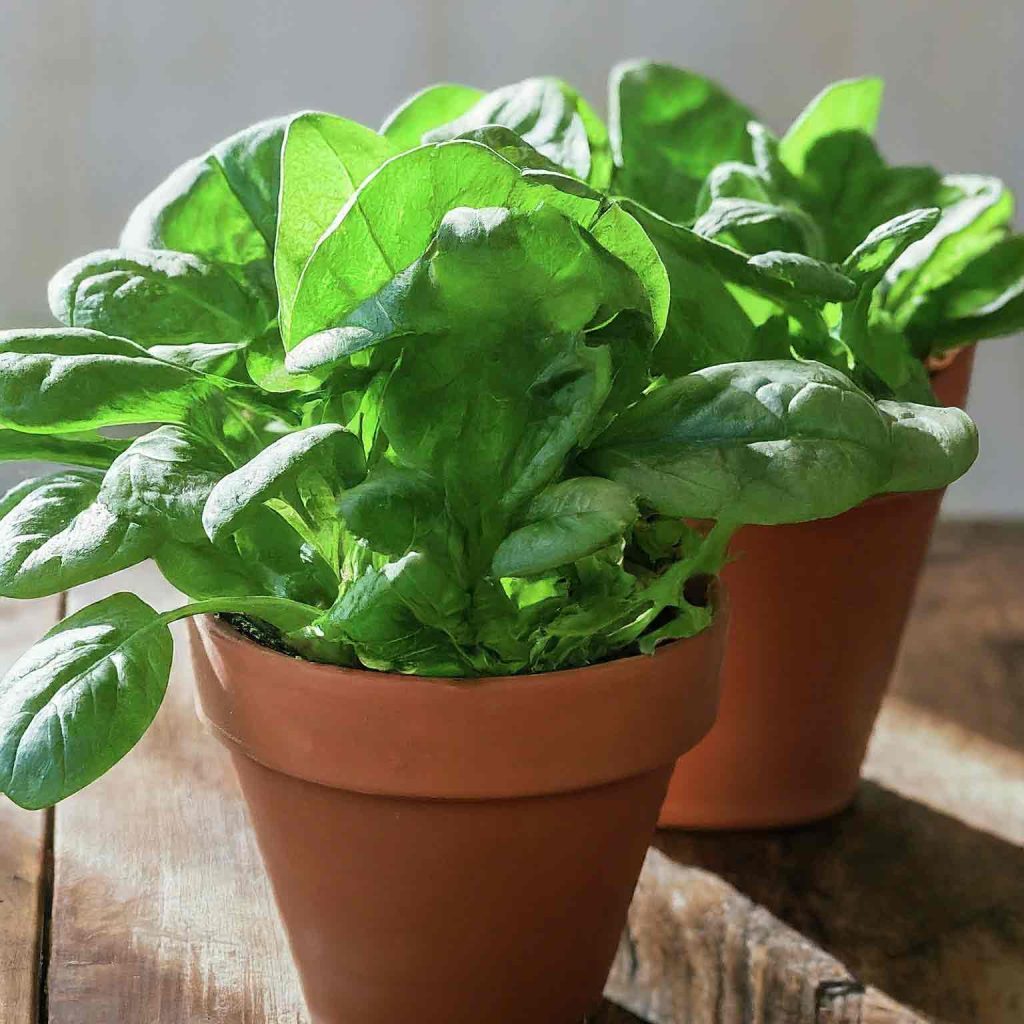
Spinach is a nourishing and adaptable leafy vegetable that can be quickly grown in pots, making it ideal for urban gardeners or anyone with restricted space.
Cultivating plants in pots enhances the nutritional value of meals and provides many advantages. This section will explore the benefits of cultivating spinach in pots.
i). Saves Space
One significant benefit of cultivating spinach in pots is the capacity to save space. Contrary to conventional gardening techniques that need a large land area, cultivating spinach in pots demands just a tiny space, making it well-suited for those with restricted space.
Its compact size makes it ideal for tiny gardens, balconies, or windowsills. Utilizing vertical space allows for cultivating a substantial quantity of spinach in a small area, making it an excellent choice for urban gardeners seeking to optimize their space.
ii). Manage Soil Quality
How to grow spinach in pots has the advantage of regulating the soil’s quality, which is essential for plant development and well-being. Using pots, you can choose the optimal soil composition for spinach, guaranteeing that your plants get the vital nutrients and minerals they need.
This is particularly crucial for urban gardeners who may encounter substandard soil conditions in their vicinity. In addition, using pots provides the convenience of readily modifying the soil as required and prevents problems like soil compaction or contamination.
ii). Convenient for Urban Gardeners
Urban residents often face difficulties in gardening owing to constraints such as limited space and resources. Nevertheless, cultivating spinach in pots provides a practical resolution.
Pots are portable, enabling you to strategically position them to optimize sunshine exposure and shield your plants from stormy weather. They also need less upkeep and exhibit reduced susceptibility to pests and diseases, making them ideal for urban gardeners with hectic schedules.
iii). Perfect for Small Gardens or Balconies
Container gardening has gained popularity due to the growing trend of urban gardening and the rising number of people living in tiny spaces. Spinach is a dense plant that can flourish in small containers, making it an excellent option for anyone with restricted space.
Cultivating spinach near other herbs and vegetables is feasible, resulting in an aesthetically pleasing and practical garden within a limited space.
Also Read: Science and Splendor of an Indoor Salad Garden
B). Selection of Pot To Grow Spinach
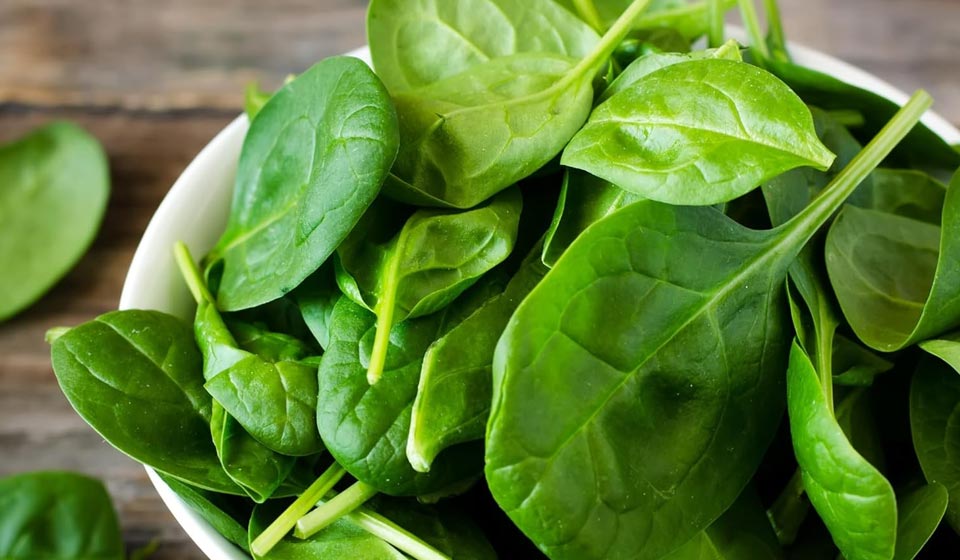
If you have a little outdoor area or want to incorporate plant life into your balcony or windowsill, cultivating spinach in containers is an excellent choice.
Nevertheless, selecting a pot to grow spinach is crucial to guarantee robust development and a plentiful yield. Here is the details.
i). Ideal Size.
If you want to know how to grow spinach in pots, then pot size has to be focused. A container with a diameter of 6-8 inches is suitable for smaller kinds, such as baby spinach.
However, if you are cultivating more giant cultivars, such as savoy or New Zealand spinach, it is advisable to use a container with a diameter ranging from 12 to 14 inches. This will provide enough room for the roots to expand and enable the plant to reach its maximum growth capacity.
ii). Material Options
Clay pots are often used due to their porosity and ability to provide optimal air circulation, which is crucial for the plant’s well-being. Nevertheless, they may be burdensome and may need more regular irrigation.
Conversely, plastic pots are lightweight and have exceptional moisture retention, making them suitable for those who neglect watering their plants. Regardless of the material you choose, ensure that the pot is equipped with enough drainage holes to avoid water accumulation at the base.
iii). Drainage Holes
Drainage holes are essential for the prosperity of your spinach plants. They facilitate the drainage of surplus water from the pot, keeping the roots from saturated and decaying.
The roots will experience oxygen deprivation without adequate drainage, leading to the plant’s ultimate demise. When selecting a pot, ensure it has at least one drainage orifice at its base. Enhance the pot’s drainage by including a layer of gravel or stones at the base.
iv). Depth of Pot
Aside from the material and size, the depth of the pot should also be considered. Since spinach has superficial roots, a container with a depth of 6 to 8 inches is adequate. However, if you are cultivating bigger kinds, it is advisable to use a pot with more depth to accommodate their more extensive root systems.
Also Read: 15 Types of Trellis to Grow Cucumber at Home
C). Preparation Of Pots for Planting
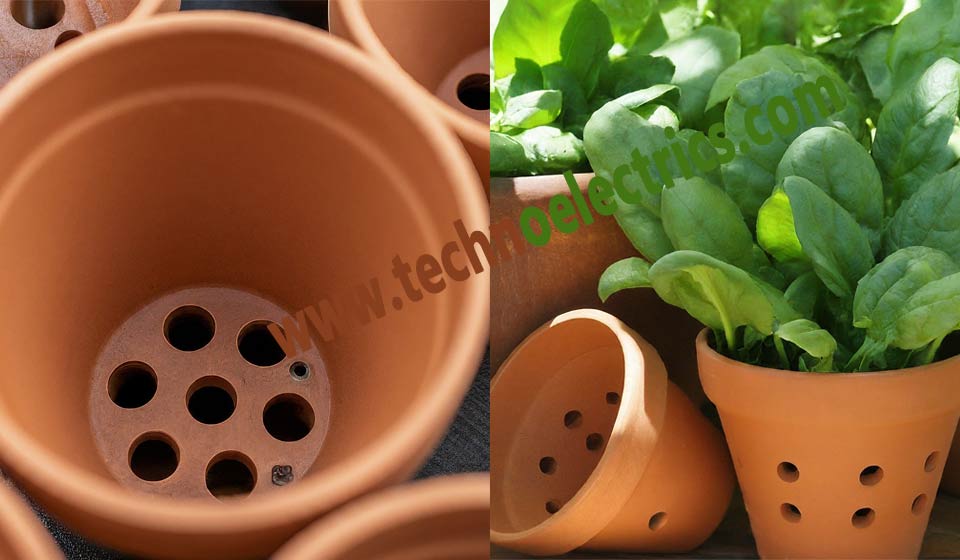
Cultivating spinach in containers is an excellent method for having fresh, locally produced leafy vegetables, mainly if you have restricted space or reside in an urban setting.
Nevertheless, to guarantee the prosperity of your spinach plants, it is crucial to prepare the pot before planting adequately. This chapter will outline the procedures for preparing the pot for planting, which include cleaning, adding soil, and constructing drainage holes.
i). Clean Your Pot
Before commencing the planting procedure, it is essential to clean the pot meticulously. This measure will effectively minimize the risk of any possible illnesses or pests adversely impacting your spinach plants.
Begin by eliminating any detritus or aged dirt from the container. Next, cleanse the pot with a water solution and gentle detergent. An alternative method for disinfecting the pot is to use a solution of bleach that has been diluted. Ensure the pot is well-rinsed and fully dry before proceeding to the subsequent step.
ii). Add High-Quality Soil
Utilizing premium-grade soil might significantly influence your spinach plants’ development and general vitality. For optimal spinach growth in pots, it is advisable to use a superior-grade potting mix that is lightweight, well-draining, and nutrient-rich.
Garden soil should be avoided due to its excessive weight and the presence of weed seeds or pests.
Fill the pot with the potting mix, ensuring that about one inch of empty space remains at the top. Gently compact the soil to eliminate any pockets of air. This will facilitate the establishment of a stable and conducive atmosphere for the growth of your spinach plants.
iii). Ensure Drainage Holes
Establishing enough drainage holes is essential for maintaining the well-being of your spinach plants. In the absence of them, the soil may become saturated with water, resulting in root decay.
Establishing drainage apertures at the base of the container is crucial to guaranteeing adequate drainage. You may use a drill, hammer, and nail to perforate the bottom of the pot. Ensure that the holes are correctly spaced to facilitate excess water drainage.
To address the absence of drainage holes in your pot, you may include a layer of gravel or fragments of shattered pottery at the base before introducing the soil. This will help prevent soil saturation.
After you have followed these instructions, your pot is prepared for planting. Before sowing the spinach seeds or transplanting the seedlings, moistening the soil with a small amount of water is essential.
Also Read: How To Grow Cucumber In Pots At Home.
Selection of Spinach Seeds or Seedlings
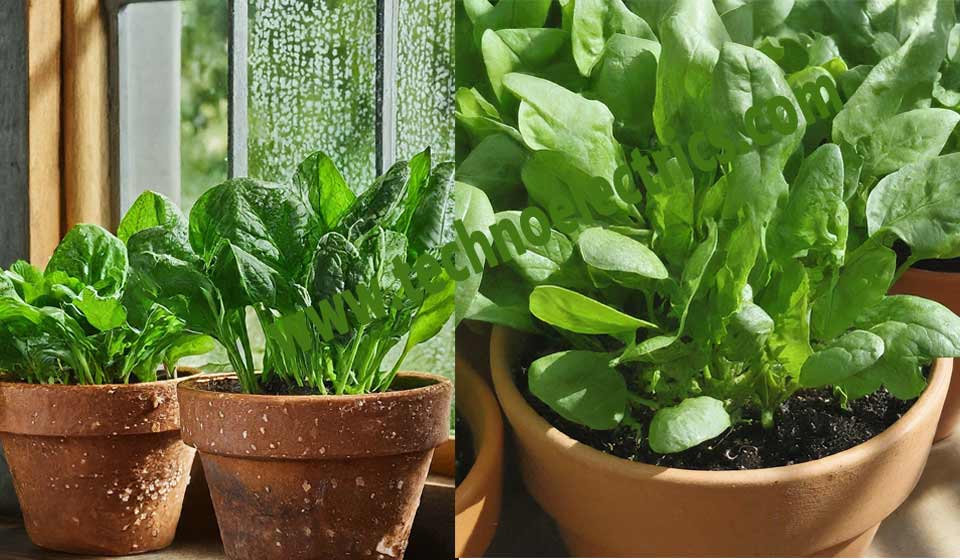
Spinach is a multifaceted and nourishing leafy vegetable often favoured by those who cultivate plants at home. Although it may be grown in conventional garden beds, it is also very suitable for container gardening.
This part of the article facilitates convenient upkeep and is particularly advantageous for those with restricted space or urban horticulturists. Choosing the appropriate seeds or seedlings is essential for a successful spinach yield when cultivating in pots. Please go ahead!
i). Right Variety
Before acquiring spinach seeds or seedlings, it is crucial to contemplate which type is most suitable for your requirements. Spinach may be classified into three primary categories:
- savoy spinach,
- smooth-leaf spinach,
- And semi-savoy spinach.
Savoy spinach is characterized by its crinkled leaves and has enhanced tolerance to low temperatures, making it an excellent selection for autumn and winter horticulture.
Smooth-leaf spinach is characterized by its flat leaves and is known for its increased heat tolerance, making it a superior choice for gardens throughout the spring and summer.
Semi-savoy spinach is a hybrid variety that can withstand cold temperatures and high heat. If you want to grow spinach in pots, consider the environment and the specific time of year.
ii). Maturity Time
Spinach is a rapidly growing vegetable; however, various kinds of spinach may have variable maturity periods. If you like a rapid harvest, choose cultivars that reach maturity within 35-40 days.
Suppose you want an extended harvesting duration; select seeds that reach maturity in 45-50 days. It is important to note that spinach will bolt (go to seed) in hot weather. Therefore, if you are cultivating spinach during the summer, choosing a variety with a shorter time to maturity is advisable.
iii). Disease-Resistant Options
To ensure a successful harvest, choose spinach seeds or seedlings that are disease-resistant, certified organic, and free from genetically modified organisms (GMOs).
These seeds have enhanced immunity against common illnesses, making them worthwhile investments. Choose from a recognized supplier and ensure the seedlings are free from signs of disease or pests.
Additionally, check for signs of yellowing or drooping and inquire about the vendor’s cultivation conditions.
Also Read: Multifaceted Benefits of Raised Bed Gardening
D). Plantation & Look After Spinach in Pots
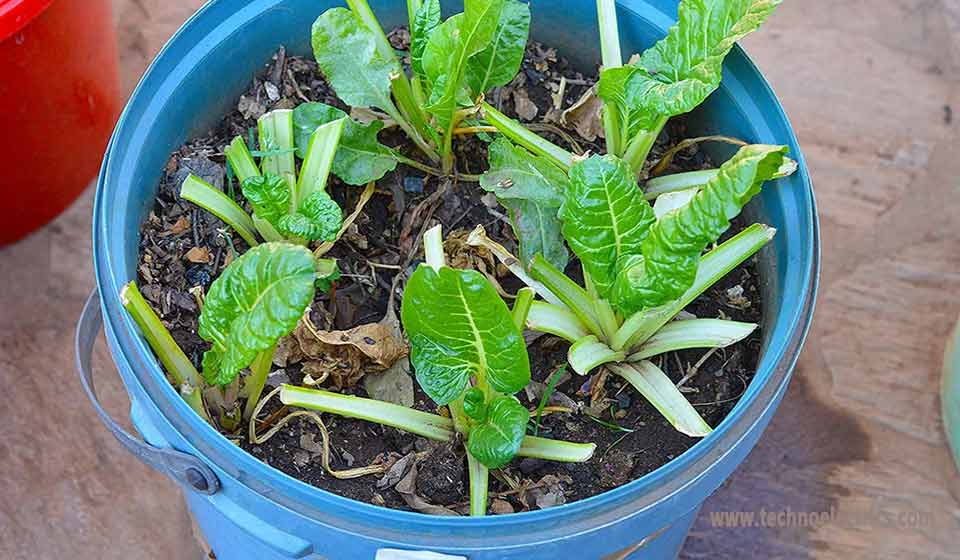
Here are outlines for procedures for cultivating and tending to spinach in containers, including appropriate spacing, irrigation, fertilization, and ways for managing pests using natural means.
i). Proper Space
If you want to grow spinach in pots, it is crucial to provide enough room for the seedlings to flourish properly. It is often recommended to place the seedlings 3-4 inches from each other, with rows spaced 12-18 inches apart.
This will provide plenty of space for the plants to grow without competing for nutrients and sunshine. Excessive population density may inhibit development and heightened vulnerability to illnesses and infestations.
ii). Ensure watering
Spinach is a hygrophilous plant that requires regular irrigation to flourish. Potted soil has a higher tendency to dehydrate than soil in the ground. Hence, it is crucial to check the moisture levels periodically.
Thoroughly rinse the plants, ensuring that the soil is uniformly damp but not saturated. To determine whether the plants need watering, insert your finger into the soil.
When dryness occurs, it indicates the appropriate moment to provide water. Watering in the morning is optimal since it enables the plants to absorb the water before the daytime heat.
iii). Proper Fertilizing
Apply fertilizer to your spinach plants every month to promote robust development and maximize crop yield. Use a well-balanced fertilizer, such as 10-10-10. Adhere to the directions on the fertilizer packaging to determine the appropriate dosage.
Excessive fertilizer application may result in leaf burn and other complications; hence, it is crucial to adhere to the appropriate amount and avoid exceeding it.
iv). Natural Pest Control
Spinach is vulnerable to pests such as aphids, snails, and leaf miners. Nevertheless, organic methods can manage these pests without resorting to toxic substances.
A practical approach involves introducing beneficial insects, such as ladybugs, which prey on harmful pests. You can establish a protective barrier around your pots by using copper tape or diatomaceous earth, which effectively discourages pests.
In addition, frequent inspections of your plants and manually eliminating any pests may also help you maintain control over them.
Also Read: How To Make Compost for the Kitchen Garden?
E). Harvesting and Utilization of Spinach
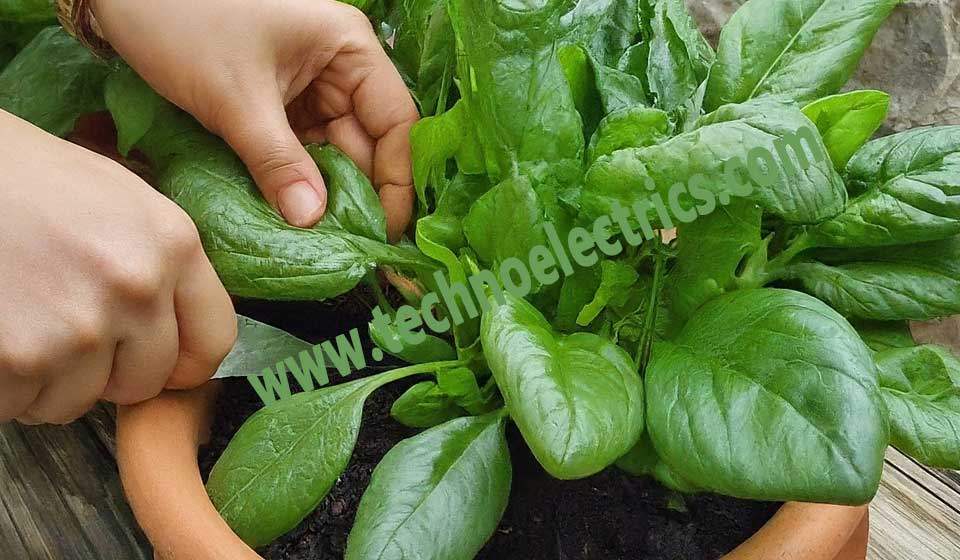
Here, you will find guidance on the optimal timing and methods to grow spinach in pots. Additionally, it will provide innovative suggestions for using this nourishing leafy green in your culinary endeavors and dishes.
i). When to Harvest
The optimal timing for harvesting spinach is before bolting, which occurs when the plant generates a long floral stem. This phenomenon often occurs during periods of increasing temperatures, so it is crucial to closely monitor your plants and gather the crops prior to its onset.
Once the plant enters the bolting stage, the leaves will acquire a bitter and harsh texture, making them less appealing for ingestion.
ii). Cutting of Spinach Leaves
To gather your spinach, use a pair of keen scissors or garden shears to sever the outer leaves of the plant, allowing the interior leaves to continue growing.
This technique, sometimes called “cut-and-come-again,” enables you to harvest from the same plant many times. To facilitate regeneration, ensure that a minimum of 2 inches of the stem remains connected to the plant.
iii). Creative Ways to Use Spinach in Cooking

After successfully gathering your spinach, it is now an opportune moment to use your culinary creativity in the kitchen. Spinach is a very adaptable ingredient that may be used in various culinary preparations. Below are many suggestions to begin your thought process:
1. Salads: Incorporating spinach into salads substantially increases essential vitamins and minerals, enhancing their nutritional value. One may combine it with various types of leafy vegetables, including fruits and nuts, for a delightful blend of sweet and savory flavors or garnish it with their preferred source of protein to create a satisfying and nourishing dish.
2. Smoothies: Spinach is often included in green smoothies due to its brilliant color and high nutritional content. You may combine it with fruits, yogurt, and other veggies to create a flavorful and healthful beverage.
3. Pesto: To create a distinctive pesto, experiment with using spinach instead of basil. Combine spinach, garlic, almonds, and olive oil in a blender to make a tasty sauce that can be used over pasta, sandwiches, or as a dip.
4. Spinach and feta stuffed chicken: Prepare a delectable and nutritious supper by creating a pocket in a chicken breast, filling it with a blend of spinach, feta cheese, and herbs, and then baking it in the oven.
5. Spinach and mushroom quiche: Prepare a quiche using spinach as the foundation, including sautéed mushrooms, onions, and your preferred cheese to create a delectable and gratifying meal.
There are several alternatives to using spinach in cooking, so feel free to explore and discover your preferred dishes! Please provide feedback and comments.
Also Read: 20 Plants That Keep Bugs Out of Your Home
F). Challenges and Solutions
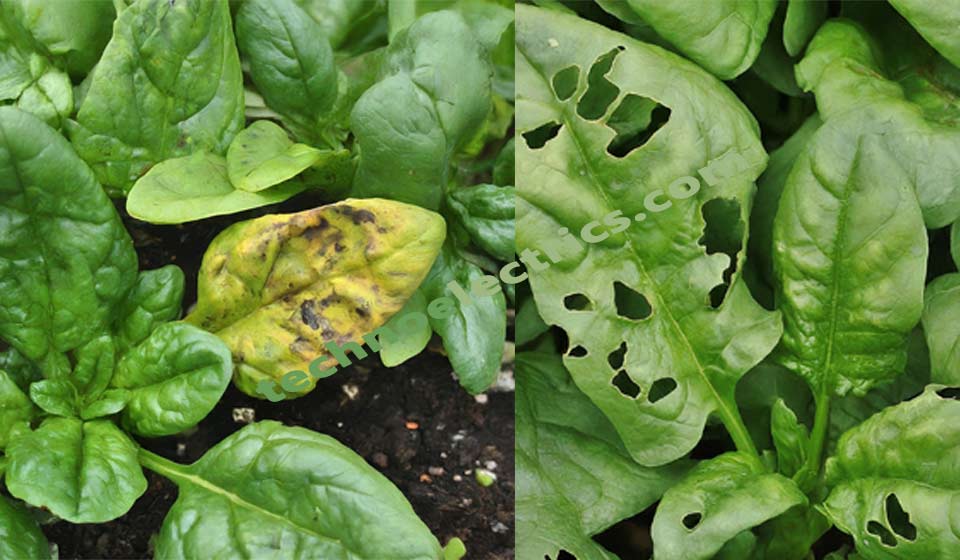
You must also face difficulties if you want to grow spinach in pots. Like other plants, spinach is vulnerable to pests, diseases, and nutritional deficits. This chapter will discuss typical problems that might occur while cultivating spinach in containers and provide remedies to ensure the vitality and well-being of your spinach plants.
i). Pest Identification and Treatment
Aphids and slugs are common pests that can harm spinach plants. Aphids consume the plant’s sap, causing distorted foliage. To combat aphids, use natural insecticidal soap or neem oil spray or introduce native predators like ladybugs.
Slugs consume spinach foliage, causing perforations and uneven borders. They can be detected by viscous trails on leaves or plant foundations. Slugs can be managed manually or used as traps, and a protective barrier can be created with copper tape or diatomaceous earth.
ii). Disease Recognition and Treatment
Spinach is susceptible to various illnesses, with powdery mildew and leaf spot being the most common. Powdery mildew is a white, powdery substance on the leaves, while leaf spots result in black patches or lesions.
These issues can be caused by inadequate air circulation, excessive watering, or high humidity. To prevent these issues, ensure adequate air circulation and avoid overhead watering. If the plant becomes sick, remove the diseased leaves and apply a fungicide to prevent the spread.
iii). Address Nutrient Deficiencies
Spinach plants can suffer from nutritional deficiencies, particularly nitrogen and iron. Nitrogen deficiency can cause leaves to turn yellow and slow growth, while iron deficiency can cause leaf yellowing between veins.
To address nitrogen deficits, use nitrogen-rich fertilizers or compost, and for iron deficiency, use liquid iron supplements or iron-rich amendments like blood meal or fish emulsion. Addressing these issues is crucial for successful spinach cultivation.
Also Read: 10 Suitable Vegetables For Your Kitchen Garden.
Conclusion
In short, grow spinach in pots; follow this comprehensive guide. It is a practical and regulated guide for city-dwelling gardeners. It highlights the benefits of this method, such as space savings, improved soil quality, and the ease of home food production.
The post also emphasizes the importance of selecting the correct container, planting, selecting the best seeds or seedlings, providing adequate care, harvesting, and addressing common concerns.
It also stresses the need to choose spinach seeds with desired traits like diversity, maturity, and disease resistance. The spot encourages readers to try this method and learn the art of container gardening.
Recent Posts
Here is reply of high-demand removable wallpapers. The wallpaper industry has changed a lot in recent times, with the launch of removable wallpaper being seen as a blessing for homeowners, renters,...
Brown is an often neglected color when considering interior design but brown decor living room ideas could make your house feel warm, sophisticated, and timeless. More adaptable than any other...
